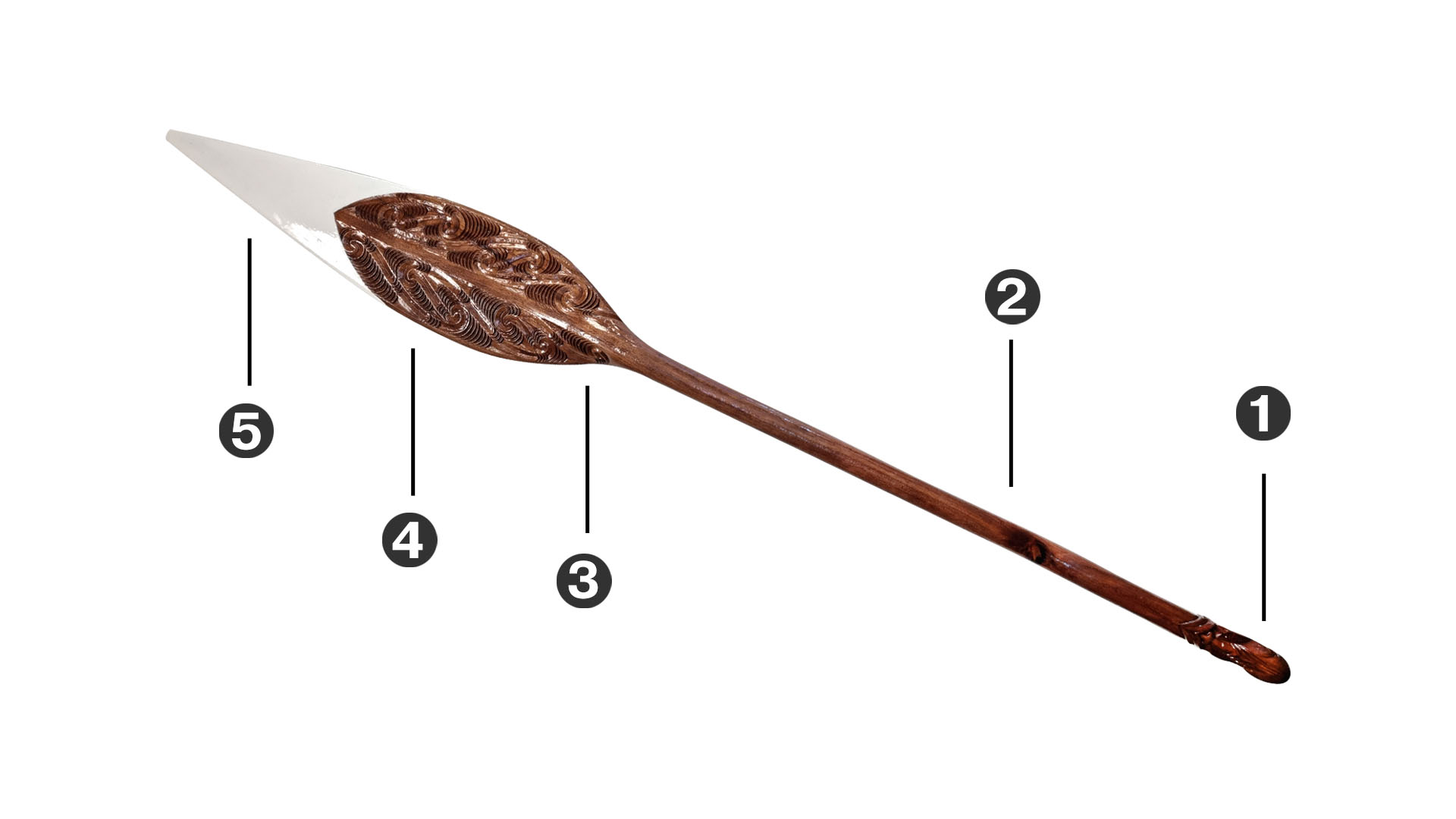Te Hukātai o kāhu kōrako
‘Te Hukātai o kāhu kōrako’ is a ‘hoe urunga’ or steering paddle, gifted to Community Leisure Management by the 2020 Kāhu Kōrako rōpū at the completion of the inaugural Māori Leadership programme run under the Aroora kaupapa with the support of Te Puni Kōkiri.
Created with the intention to be a functional cultural taonga connecting the past, looking towards the future, and symbolising the journey the company is on incorporating Te Ao Māori into its organisational landscape and culture.
The hoe was carved by Te Kaurinui Parata, a Ngāti Wai, Ngāti Pukenga carver who carves out of the Hihiaua Cultural Centre in Whangārei.
The following is a brief description of some of the key elements and whakaaro (thought) that make up the larger narrative of the hoe.

- Rangi – the carving at the top of the hoe is referred to as a Rangi, the eyes face forward and symbolise looking forward to the future. When the head is on its own it places an emphasis on whakaaro (thought).
- Pohutukawa – the rakau or wood that the hoe is carved from is Pohutukawa, this wood was chosen for its strength (function) but also because of its connection to Matariki and the star Pohutukawa, a symbolism towards remembering the past. The Pohutakawa tree is also prolific along the coastal shores of Whangārei where the hoe was carved.
- Kirikiore – Is whakarei/design that is common in Ngāti Wai, again this connects the hoe to its origin. Some of the only known remaining specimens of Kiore alive today live on the off shore Ngāti Wai Island Māui taha (an Island otherwise known Hen and Chicken Islands chain).
- Unaunahi – The second whakarei feature on the paddle is the design know as ‘te unaunahi i whakapiri ki te Ika a Māui’ or unaunahi for short. This design, again rooted in Tai Tokerau carving, represents the fish scales on the fish of Māui. In the North there are four scales which represent; (1) earth, rock, and mineral, (2) flora, (3) fauna, (4) humans.
- Hukātai – the white on the tip of the hoe represents many things, it can be the turbulence and white water created in the action of paddling, it can represent knowledge as referenced in Tāne’s journey to the heavens securing the baskets of knowledge, it can represent the relationship between tangata whenua and tangata tiriti (the white being tangata tiriti the carved part of the hoe tangata whenua).
Hoe Tikanga:
Tikanga are guiding principles, as well as gifting the hoe the kāhu kōrako rōpū came up with the following tikanga to ensure the mana and mauri of the hoe as a taonga Māori.
- The hoe has its own mana and mauri, these must be respected at all times, treat it as you would a living being.
- The tip of the hoe (the white part) should not be placed on the ground. If rested on the ground the head (Rangi) of the paddle should rest on the ground. To remember its correct placement, think of it as Ranginui meeting with Papatuānuku again.
- If the hoe is out and about it should travel in the care of a person, not as cargo, if being used to steer a canoe it should only be used by a competent steers person.
- The hoe is in the care of the CEO unless arranged otherwise.
